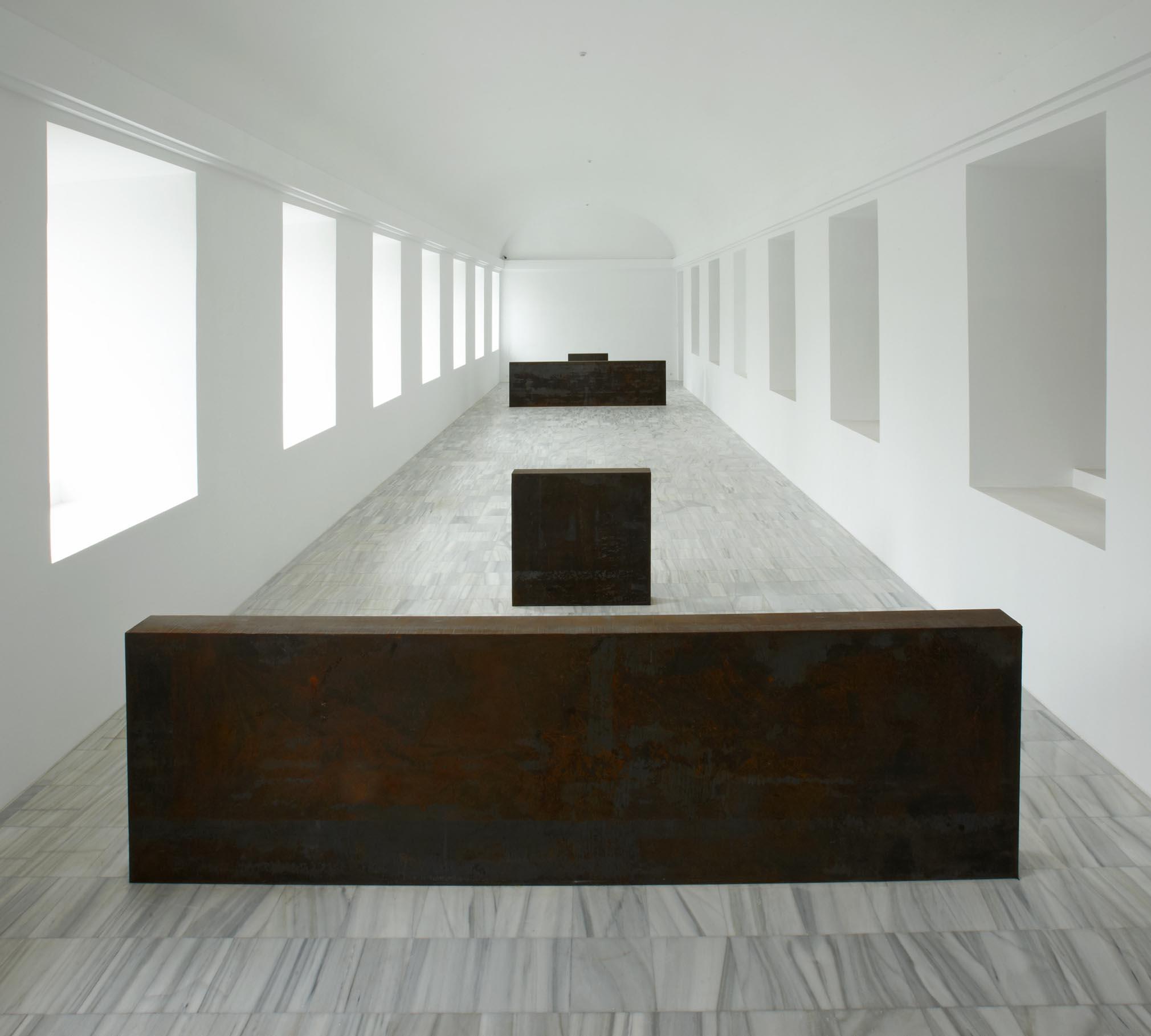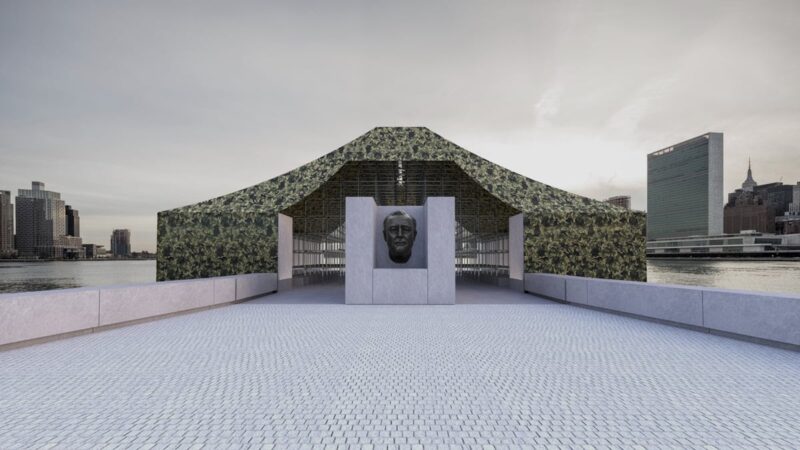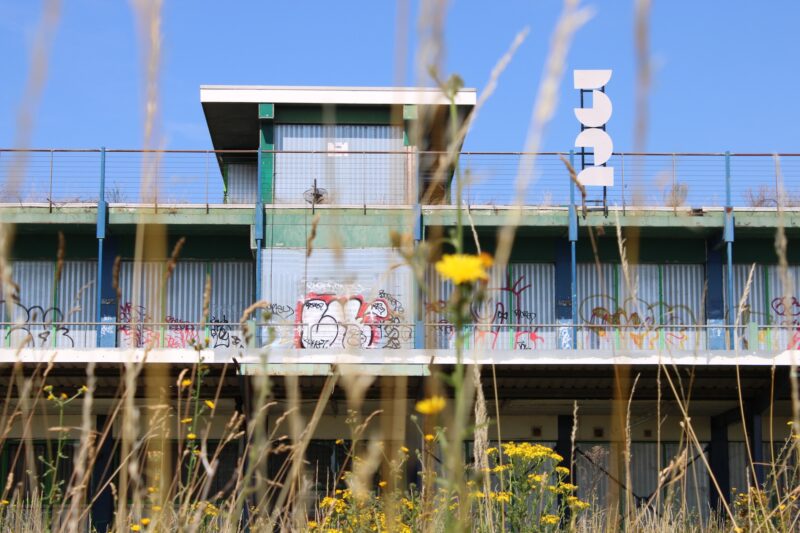A major Spanish museum thought a 38-ton Richard Serra sculpture it had commissioned was in storage. It wasn’t. It had disappeared, and its whereabouts are still a mystery.

In 2006 The Reina Sofía Museum in Madrid revealed that an original commission by Richard Serra from 1986—a commission that weighed over 83,000 pounds—had simply vanished.
In 1986 The Reina Sofía Museum commissioned Richard Serra to create a piece for a landmark exhibition, References: An Artistic Encounter in Time. Their idea was to show the work of three famous Spanish artists next to that of three renowned artists from the 20th century, including Richard Serra.
For $220,000—Serra made a piece entitled “Equal-Parallel/Guernica-Bengasi.” It was a steel sculpture on the grand scale that his works had begun to take, a scale that required special teams and logistical planning in order to install.
For this work, he created four large pieces of cast Corten steel, two rectangular and two square. They were the same height as the museum’s windowsills, nearly five feet wide, and the largest of the structures, the rectangles, were over 16 feet long. They were arranged in an alternating formation, with a pair of the sculptures placed on each side of a room specially made to house them with a large empty space in between. The piece dealt with the same concepts that Serra had explored in much of his monumental sculpture work: weight, density, space, and time. Serra has specialised in works made of steel throughout his career, an interest that began early in his life when he worked in steel mills to help pay the bills.
But Equal-Parallel/Guernica-Bengasi did something most of his work did not, the museum said—it also referenced a pair of specific historical events. In the piece, Serra drew a connection between the events of the Guernica bombing in 1937 and that of Bengasi (spelt “Benghazi” in the U.S.) by the Americans in 1986. Both resulted in mass civilian casualties and had repercussions that echoed through history.
“Weaving these two references together, Serra makes an allusion to the debate around the role of history: whether it begins and ends with the individual corporeal experience, or whether its retelling can function as a construction of the world,”
Carmen Fernández Aparicio, chief curator of sculpture at the Reina Sofía, wrote for the museum.
After the exhibition closed, “Equal-Parallel/Guernica-Bengasi” remained in its special room in the museum for four years. But in 1990, it was moved into a storage facility. From there, the trail gets a little murky. As far as the museum was concerned, the Serra was busy enjoying its stay in the facility where it was being kept safe and sound until the museum decided to exhibit it again.
After the loss was discovered, the Guardian reported that there weren’t any records after 1992 indicating an exchange in information or payments between the museum and the facility to confirm the sculpture’s condition. Whether this was a “proof of life” oversight or not, it wasn’t until 2005 that the museum discovered that the piece was no longer where they thought it was.
The storage facility had encountered some money troubles and had been put into receivership in 1998. In the process, the 38-ton Serra had vanished.
Authorities at the museum told the Guardian,
“The company was asked to account for the work in October 2005. But difficulties were encountered, with the owner of the company saying he did not know where it had gone.”
With all parties claiming ignorance, the museum was at a loss. The police were called in, but their investigation failed to turn up any concrete leads. When the media got wind of the situation, the museum had to come clean to Serra. The work had been lost and its whereabouts remained a mystery.
But far from being the devastating tale of heartbreak that most art losses generally are, this one had “a very happy ending,” as Martínez de Aguilar told El Pais. When the notoriously difficult Serra learned of the fate of his Madrid commission, he agreed to remake the piece for the museum for just the cost of materials (just under $100,000).
After the new version was finished in 2007, it took a tour through New York for the Museum of Modern Art’s major Serra retrospective, before landing in Madrid in early 2008, where it was installed—or re-installed, for that matter—in the room that had originally been created for the purpose.
Despite the unknown whereabouts of the original, both the artist and the museum have agreed that only one version of “Equal-Parallel/Guernica-Bengasi” will ever exist at a time. If the lost sculpture is ever found, the two parties will decide which version will be destroyed.
Until then, visitors to the Reina Sofía Museum can visit the room specially crafted for this monumental sculpture and wander around Serra’s masterpiece contemplating space and size and the connections of history, while, quite possibly, a shadow version oxidizes away alone somewhere in a room empty of eyes, its own testament to the mysteries of time and space. Via Daily Beast







